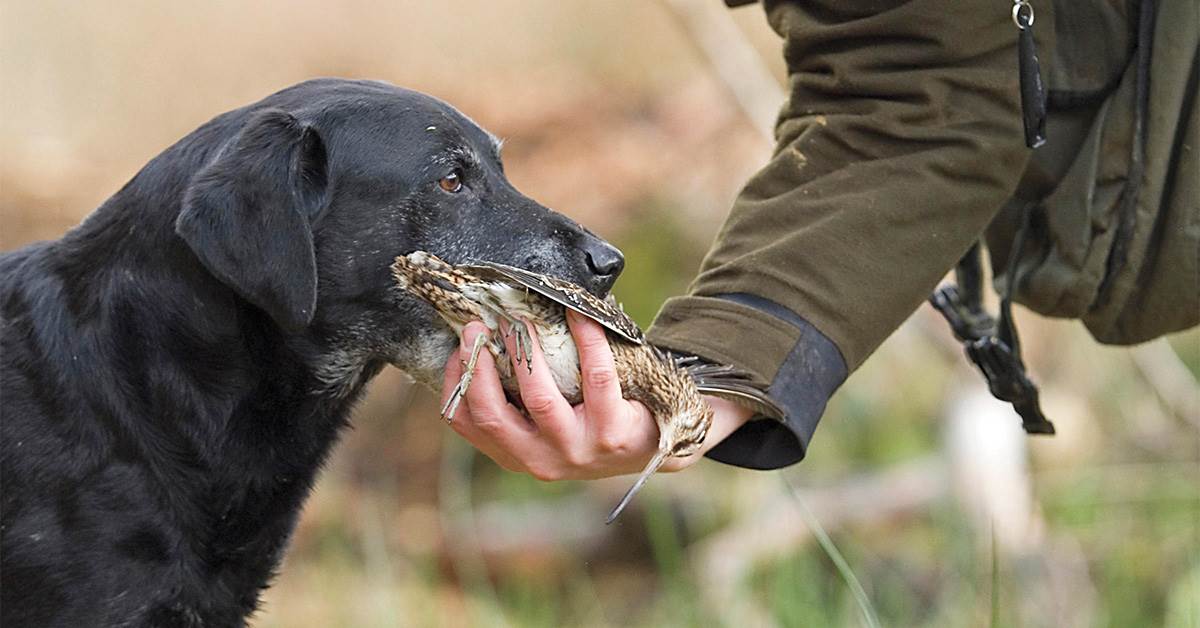Give Snipe a Go
These abundant, sporty birds offer a fun change of pace for waterfowlers and their retrievers
These abundant, sporty birds offer a fun change of pace for waterfowlers and their retrievers


It makes me a little uncomfortable to describe any game bird as "underutilized." But if there's one species that truly qualifies for this designation, it's the Wilson's snipe, Gallinago delicata. Formerly known as the common snipe and colloquially known as the jacksnipe, it's found in every state except Hawaii. And every state except Hawaii offers a hunting season for these birds. The continental breeding population, estimated to number about two million, is by all indications stable.
In other words, there are plenty of snipe out there and plenty of opportunities to pursue them. Plus, they are among the most challenging targets in all of wingshooting. The snipe has a top speed of more than 60 miles per hour and its flight is incomparably erratic. Throw in the birds small size, slender profile, and the difficulty of keeping a bead on it as it dips and darts against a background of vegetation that's basically the same color as the bird, and you begin to get the picture.
The only puzzling thing is why more waterfowlers don't hunt them. After all, snipe are found in or near many of the same places where you hunt ducks and geese—marsh edges, mudflats, flooded pastures, mucky harvested croplands, and the like. Snipe need soft ground where they can probe for worms and other invertebrate fare with their long, prehensile bills, and they prefer just a fringe of low, grassy cover—the better to watch for approaching danger.
Virtually any well-trained dog of the flushing, retrieving, or versatile breeds can be used successfully for snipe hunting, although as a very general rule snipe don't hold well for pointing dogs. Most hunters who chase these birds in any kind of serious way use one of the flushing-retrieving breeds—another reason snipe are such a wonderfully complementary diversion for waterfowlers.
The key for any "snipe dog" is that he be obedient and under control at all times. If this means keeping him at heel until you send him for a retrieve, so be it. In fact, that's how some hunters prefer to do it. While snipe don't typically flush out of range, they tend not to tarry, either. What this means in practice is that a dog that doesn't hunt close, ideally within 20 to 25 yards, is likely to cost you some shooting.
Because of the boggy, broken nature of the places snipe inhabit, it's not as easy for a dog to quarter the ground and maintain an effective pattern as it is in, say, pheasant habitat. According to Tom Ness, the Hall of Fame breeder and trainer of English cocker spaniels, this is the biggest challenge facing any dog used for snipe hunting.
.jpg)
"I've hunted snipe with a lot of dogs," Ness relates, "and the two qualities that stand out in the best ones are confidence and intelligence. Some dogs look at where you're sending them, and you can almost hear them thinking, 'What the heck is this?' They're intimidated. They don't know how to handle the constant transitions between solid ground, muck, shallow water, and so on. Confident, intelligent dogs, on the other hand, take the cover in stride and learn on the fly how to hunt it."
And while as a cocker man he's admittedly prejudiced, Ness believes that smaller dogs have an advantage over larger ones in terms of getting around in snipe country without bogging down (pun intended).
The most important service any dog can render in the snipe marsh, ultimately, is retrieving and hunting dead. Finding a snipe that falls in a patch of thick cover is a near-impossible task for a mere human; it takes the nose, and the desire, of a good dog to get it done.
So the next time it's a bluebird day and the ducks aren't flying, don't sit in the blind sulking. Screw in a slightly more open choke, drop some number 7 steel or bismuth in your pockets, and take your retriever for a spin in search of snipe. It's about as much good, muddy fun as its possible to have.
Ducks Unlimited uses cookies to enhance your browsing experience, optimize site functionality, analyze traffic, and deliver personalized advertising through third parties. By continuing to use this site, you agree to our use of cookies. View Privacy Policy